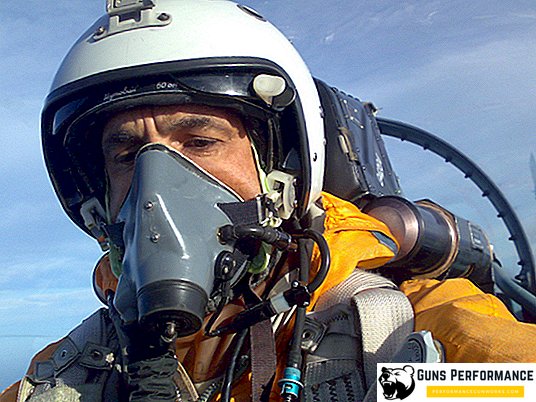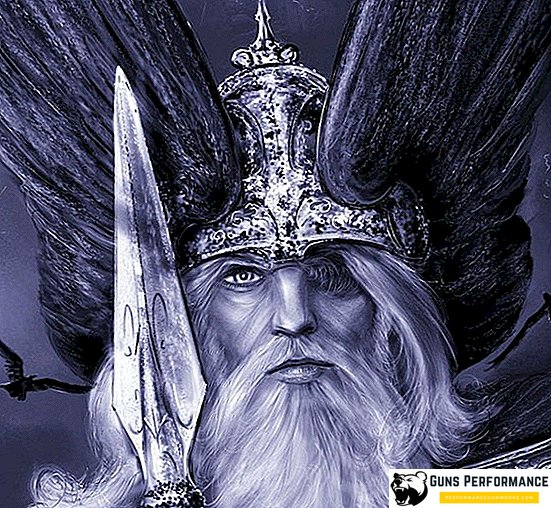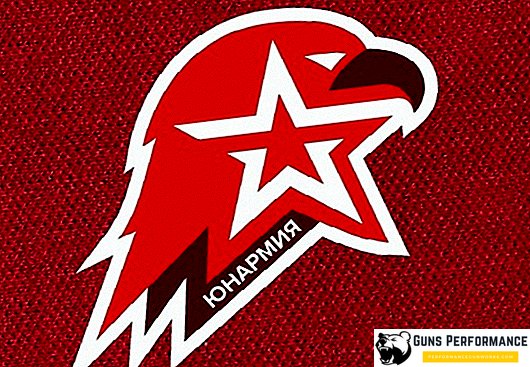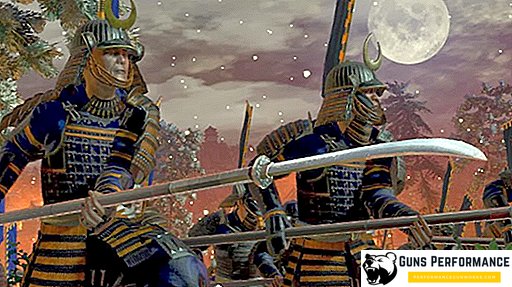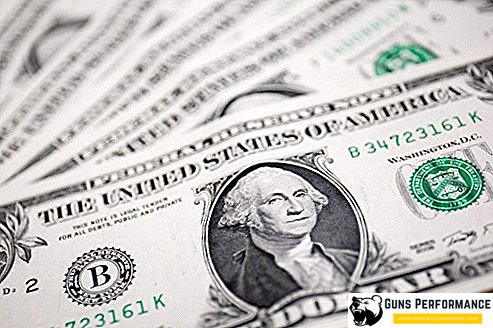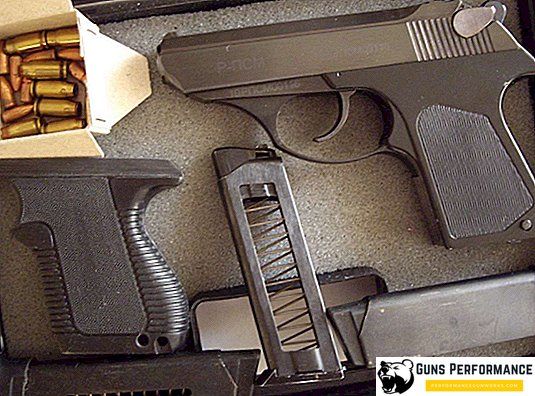
The thirties of the last century - this is the era of rapid development of aircraft in the USSR. Among the numerous aircraft fleet of the Soviet Union, the I-16 fighter can be called the most famous and recognizable car. This plane shone in the skies of Spain, such legendary aces like Chkalov, Kokkinaki and Yumashev took part in the development of the I-16, this fighter was an indispensable participant of numerous Soviet films about pilots, parades on Red Square, he was depicted on posters and in children's books.
I-16 can be called a staging machine, not only for Soviet, but also for world aviation. In fact, he became the ancestor of a new type of combat aircraft - high-speed monoplane fighters. The appearance of the I-16 led to a review of not only the established views on the design of fighters, but also changed the understanding of the tactics of their use and the organization of air combat.
The I-16 was developed in the early 1930s in the design bureau of the Soviet “king of fighters” Nikolai Polikarpov. The first flight of the aircraft took place at the end of 1933. The following year, the I-16 fighter was put into operation, its mass production began, which lasted until 1942. During this period, more than 10 thousand cars were manufactured.
The civil war in Spain became a baptism for I-16, then the fighter participated in the conflict at Khalkhin-Gol, in the Winter War with Finland and in the Great Patriotic War. The I-16 fighter was constantly improved: during serial production, more than ten modifications of this aircraft were manufactured.

At the time of the German attack on the USSR, the I-16 was a significant part of the Red Army fighter fleet. Many famous Soviet aces began their combat path on I-16. In the Red Army, this aircraft received the affectionate nickname "donkey" or "donkey". For high maneuverability, the German pilots called this Soviet fighter a "rat" or "fly". During the war, the I-16 was used until 1944. In January 1943, the Soviet pilot Golubev shot down two newest German FW-190A fighters on a donkey.
In Spain, the operation of the I-16 continued until 1953.
In addition to the USSR Air Force, the I-16 was used by the air forces of Spain, the Kuomintang, and Mongolia. The pilots of Finland, Romania flew on captured I-16s, the Luftwaffe pilots did not disdain this fighter.
History of creation
In the early 1930s, some Soviet aircraft designers began to realize that the era of biplane planes was leaving forever and the future of fighter aircraft was following monoplanes with higher speed characteristics. The leadership of the Red Army began to bow down to the same opinion.
In 1932, the designers of Sukhoi Design Bureau were assigned to develop a monoplane fighter for the Red Army Air Force. At about the same time, Polikarpov was instructed to create a biplane, which they planned to put into service in the event of Sukhoi’s failure. Subsequently, this aircraft was adopted and received the designation I-15. However, at the same time, Polikarpov, on his own initiative, began to work on the creation of a monoplane fighter, the future of the I-16.

At the beginning of 1933, the leadership of the air force, having familiarized with the project of Polikarpov, issued the designer a formal task for the development of a fighter. And in November, seeing the model of the aircraft, decided to start this car in the series.
The first prototype of the I-16 (TsKB-12) took to the air on December 30, 1933, at its helm was the most famous Soviet pilot of the thirties - Valery Chkalov. For the tests, two airplanes were created: on one of them, the Right Cyclone engine was installed, and on the second, a domestic domestic air-cooled M-22 motor (480 hp) was installed.
On tests, as the designers had expected, the I-16 showed excellent speed characteristics: TsKB-12 (M-22 engine) accelerated to 303 km / h at an altitude of 1 thousand meters, and TsKB-12bis (Right-Cyclone) - to 361 km / h It should be borne in mind that both aircraft were equipped with a non-retractable ski landing gear, and this significantly reduced their speed.
But not everything was so smooth. Compared to low-speed biplanes, the new fighter was unstable in flight and was very difficult to fly. The fact is that Polikarpov, in order to improve the maneuverability of the fighter, intends to worsen its stability by shifting the center of gravity backwards. To cope with this machine could only skilled pilot. I-16 generally wanted to remove from the tests and close this project. Fortunately, Chkalov liked the plane very much, and it was only thanks to his enormous prestige that the car was defended. However, it was ordered to allow only experienced pilots to fly on the I-16 and to prohibit performing aerobatics on it.
Also, the take-off and landing characteristics of the new car and the review of the rear hemisphere were not too satisfactory.
In February 1934, state tests of the fighter began, and at the end of March, operational tests, which took place near Sevastopol. On May 1, the newest aircraft was shown during a parade on Red Square.

Tests continued until the end of 1934, the designers had to seriously refine the car. Many problems were with the cleaning and release of the chassis. This process was carried out manually, the system often stuck and was difficult even for physically strong pilots. In addition, the aircraft’s fuel system was not brought up, the strength of the flashlight raised questions, and the pilots complained about uncomfortable seat belts in the cockpit. It should be noted that the problem with the cleaning and release of the chassis on the I-16 has not been finally resolved.
Simultaneously with the testing and fine-tuning of the machine, its mass production was unfolded in factories No. 21 (Gorky) and No. 39 (Moscow). In 1934, an aircraft factory in Moscow was supposed to produce 50 fighters, another 250 vehicles were in the plans of the Gorky aircraft factory.
The first serial modification of the aircraft received the name I-16 type 4. The start of production of the I-16 is a truly significant event in the history of domestic aviation: until 1937, the USSR was the only aviation power that was armed with high-speed monoplane fighters.
In 1935, the I-16 was demonstrated at an exhibition in Milan, where it produced a real sensation.
Serious problems arose during the development of the new machine in the army. The pilots, who all their lives flew low-speed biplanes with good handling, at first simply feared the new aircraft. There were a lot of accidents and catastrophes, the I-16 was very strict in management and demanded maximum concentration from the pilot. Psychologically, the pilots found it difficult to get into the new aircraft, which had only one wing and retractable landing gear.
To raise the spirit of the Soviet pilots, a group of leading test pilots of the country conducted several demonstration flights on the I-16, during which time aerobatics and synchronized group aerobatics were performed. The performances for the performances were painted bright red, so such groups were called "red fives".
Operation of the I-16 in the combat units showed that the machine has significant potential for further modernization. This made it possible, while conducting improvements in the aircraft, to maintain its characteristics at a good world level for several years.
I-16 received baptism of fire in 1936 in the sky of Spain. On this fighter fought as the Soviet pilots sent to this country, and the Spanish pilots who had undergone additional training in the Soviet Union. The first batch of new aircraft arrived on the Iberian Peninsula at the end of October 1936, and on November 9, the first battle of the enemy happened.

In 1937, the I-16 fighter was sent to China and Mongolia, where they participated in the battles by the Japanese. For a very long time, the Soviet aircraft surpassed all its opponents, only at the end of the 30s more modern Messerschmitt Bf-109E fighters were created.
In 1939, the I-16 took part in the conflict at Khalkhin-Gol, in August of the same year an agreement was signed between the USSR and China on the construction of a factory for assembling Soviet aircraft. In August 1939, another significant event took place: the I-16 was the first to launch an unguided rocket projectile, with the help of which two Japanese fighters were shot down.
Fighter I-16 was used during the war with Finland. On December 1, 1939, the first air battle between Finnish aviation and the Red Army air force took place. Both sides suffered losses: one I-16 and the Finnish Bristol Bulldog were shot down.
I-16 took part in the Great Patriotic War from its very first hours. This fighter obtained the first air victory for the Soviet Air Force in this war: on June 22 at 3.30 in the sky over Brest the German Bf.109 was destroyed. In the same area, thirty minutes later (about 4.00), the Luftwaffe won his first victory: a German fighter shot down an I-16.

On July 8, for the first time, the I-16 pilots group from the 158th Fighter Aviation Regiment was awarded the title Hero of the Soviet Union.
Description of construction
Fighter I-16 is made according to the classical aerodynamic scheme, it had a mixed design, the main materials of which were steel, aluminum and wood.
The aircraft had a semi-monocoque fuselage consisting of two halves. A set of wooden spars, stringers and frames, pasted over with birch veneer, was used as a frame. The frame was reinforced with steel corners, the sheathing was covered with fabric, putty and polished.
The wing had two spars and consisted of a center section and two consoles. Spars were made of steel pipes, ribs - of duralumin profiles. In the front part, the center-section trim was made of plywood, and at the rear, of duralumin. The ailerons occupied almost the entire rear edge of the wing consoles.

Single tail, with a metal power set and linen covering.
The I-16 had a tricycle retractable landing gear with two main struts and a tail crutch. In later versions, the tail crutch was replaced by a non-retractable wheel.
The wheels were equipped with shoe-type brakes with pedal drive. Chassis depreciation - liquid-gas. Cleaning and release of the chassis was done manually with a winch. The system had a large number of elements and was unreliable. To release or remove the chassis, the pilot had to make 44 turns with a winch.
The cockpit was shifted to the tail of the aircraft, initially it was closed, then it was made open. This decision was forced: the design of the lamp was unsuccessful, and this greatly limited the review to the pilot. In addition, the pilots believed that flying with an open cockpit more safely, they were afraid not to have time to open the lamp in case of an accident. In the later versions of the fighter, an armor squash was installed to protect the pilot, which was 8 mm thick.

The power plant of the I-16 fighter consisted of a star-shaped air-cooled engine with nine cylinders. Different engines were installed for various modifications of the aircraft: the I-16 type 4 was equipped with an M-22 engine (480 hp), and in the later series of the car there were engines with a capacity of about 1 thousand liters. with. The screw was made of aluminum alloy. His step could be changed on the ground.
The planes had a cylindrical hood, with nine holes in the frontal part, through which the oncoming flow cooled the engine and left through eight cuts on the sides. Exhaust gases were also discharged through them.

The armament of the first modifications of the fighter consisted of two ShKAS machine guns, which were installed in the wing consoles, later two more synchronous were added to them. In the later series of the machine, the wing machine guns were replaced by ShVAK cannons (20 mm). On the plane it was possible to install additional fuel tanks, aerial bombs or rockets RS-82.
The I-16s were painted in a variety of colors, but most often the fighter from above was dark green and the bottom was light blue.
Modifications
The following are the main modifications of the I-16 fighter and their main features are given:
- I-16 type 4. The basic model of the aircraft, mass production of which began in 1934. The fighter was equipped with an M-22 engine (480 hp.), The armament of the machine consisted of two ShKAS machine guns (7.62 mm) in the wing. Release modification continued until the spring of 1936, a total of about 400 aircraft were manufactured. This modification has not been exported.
- I-16 type 5. Modification of an aircraft with an M-25 engine (725 hp.) Type 5 production began in mid-1935 and continued until early 1938. This fighter had a slightly different shape of the hood, it was equipped with a cook and a ratchet. The I-16 type 5 was actively used in Spain, very often a self-made armored backboard was installed on this aircraft.
- I-16 type 6. A modification of the fighter, which appeared after the start of the use of the I-16 in Spain, its design took into account the experience of real combat operations. Under the engine of the aircraft appeared synchronous machine gun, armresting and oil cooler. The closed lantern was replaced with an open one. A small batch of aircraft of this modification was sent to Spain.
- I-16 type 10. Modification of a fighter with an M-25V engine (750 HP). The armament of the machine was also changed: two additional ShKAS synchronous machine guns were mounted above the engine, each of them had an ammunition load of 650 rounds. All this led to an increase in take-off weight of up to 1,700 kg. On this machine it was possible to install retractable skis, which in flight pressed against the center section. The wing of the aircraft was equipped with landing plates. I-16 type 10 is one of the most massive modifications of the fighter. It was produced not only in the USSR, but also established a license issue in Spain. It was made several experimental machines equipped with powerful American engines. This has significantly increased their effectiveness in battles with German fighters Messerschmitt Bf.109.
- I-16 type 12. A modification of the fighter, on which the machine guns in the wings were replaced by ShVAK cannons.
- I-16 type 17. This is a modification of the I-16 type 10 aircraft with wing ShVAK guns instead of machine guns. In the places of their installation the wing structure was strengthened. Each gun had 150 rounds of ammunition.
- I-16 type 18. A fighter variant equipped with an M-62 engine (1000 hp.) With a two-speed supercharger and a VISH-6A propeller of variable pitch. For the screws were developed new coca. The aircraft engine support frame was also enhanced, the oil system was improved, the aircraft received a new carburetor. Fuel tanks were protected by armor. Armament fighter consisted of four ShKAS machine guns. Modification of the I-16 type 18 had a visual difference: the tail wheel, installed instead of a crutch. The aircraft was manufactured in significant quantities. This modification had better stability in flight, its control was less strict, improved takeoff and landing characteristics.
- I-16 type 24. This aircraft is a modification of the I-16 type 18. It was installed a new M-63 engine and strengthened the design of the fuselage and wing. Between the side members, additional plywood trim was installed, which significantly reduced wing torsion. The fighter was equipped with a propeller of a variable pitch VISH AV-1 with a new Kok, the chassis design was strengthened. In addition, this modification could be equipped with additional suspension tanks with a volume of 200 liters. Armament fighter consisted of four ShKAS machine guns, two of which could be replaced by 12.7-mm BS. Also, the fighters of this modification could be armed with missiles RS-82 (up to six). The mass of the aircraft reached 2050 kg.
- I-16 type 27. The fighter is a variant of the deep modernization of the type 17 by replacing the moto. The plane was armed with two ShVAK guns.
- I-16 type 28. Modification of the aircraft I-16 type 24, with gun armament instead of machine gun.
- I-16 type 29. The last serial modification of the fighter, its mass production began in 1941. The aircraft was equipped with an M-63 engine, its armament consisted of two ShKAS machine guns and one BP. On this plane, the landing gear design was enhanced, some fighters of this modification were equipped with radio stations.

Operation and combat use
The I-16 was the first Soviet high-speed monoplane fighter, so many of its design elements were not sufficiently developed. However, the creation of such a machine, of course, can be called a significant breakthrough for the Soviet aircraft industry. An unambiguous error of designers can be called a shift of centering to the tail, which was the cause of most of the shortcomings of this combat vehicle.
The plane was very strict and demanding in the management, he did not forgive the pilot of errors and demanded from him complete concentration. But it was believed that if the pilot managed to master the I-16, then he would fly on any plane without any problems.
For a long time, the I-16 had practically no competitors in speed and maneuverability, as already shown by the first military clashes in Spain. In addition, "donkey" differed significant vitality and easily repaired. Первые модификации истребителя имели проблемы с перегревом двигателя на максимальных оборотах, но установка маслорадиаторов исправили ситуацию.
Советские истребители отлично показали себя в боях с немецкими и итальянскими бипланами, но ситуация в корне изменилась после появления в Испании Messerschmitt Bf.109. Франко вообще считал И-16 "Боингом", он не верил, что этот самолет могли сделать в СССР.

И-16 активно и довольно успешно применялся на Дальнем Востоке против японских войск. Его основными (и довольно серьезными) противниками стали Mitsubishi A5M и Nakajima Ki-27.
Основным оппонентом И-16 в Зимней войне стал истребитель Fokker D.XXI, который стоял на вооружении финских ВВС. Несмотря на значительное количественное превосходство, советские истребительные подразделения понесли серьезные потери.
На момент нападения гитлеровской Германии на СССР в западных округах находилось более 1600 истребителей И-16. В середине 1941 года "ишачок" был реально устаревшим самолетом. Он уступал своему основному сопернику Bf.109Е по горизонтальной скорости и по скорости набора высоты, хотя и значительно превосходил Ме-109 в маневренности. Однако немецкие летчики обычно не вступали в "собачьи драки" на горизонтали и при желании могли легко избежать боя, если находились в невыгодной позиции.
Советские ВВС понесли очень тяжелые потери в людях и технике в первые месяцы войны. Погибших кадровых летчиков пытались заменить молодым пополнением, но зачастую оно было плохо подготовлено. Это привело к большому числу небоевых потерь (около 40%), так как эта машина не прощала небрежного отношения к себе. Кроме того, неопытный летчик на И-16 не мог на равных противостоять немецкому пилоту на Ме-109. Поэтому в 1941 году средняя продолжительность жизни летчика-истребителя на И-16 составляла 1-3 боевых вылета.

Specifications
Ниже указаны летно-технические характеристики советского истребителя И-16 типа 10:
- размах крыла, м - 9;
- длина, м - 5,9;
- высота, м - 2,25;
- площадь крыла, кв. м - 14,54;
- масса пустого, кг - 1315;
- масса взлетная, кг - 1750;
- двигатель - М-25А;
- power, l. with. - 730;
- Max. скорость, км/ч - 383;
- практическая дальность, км - 820;
- Max. скороподъемность, м/мин. - 649;
- потолок, м - 9100;
- crew, people - one.



